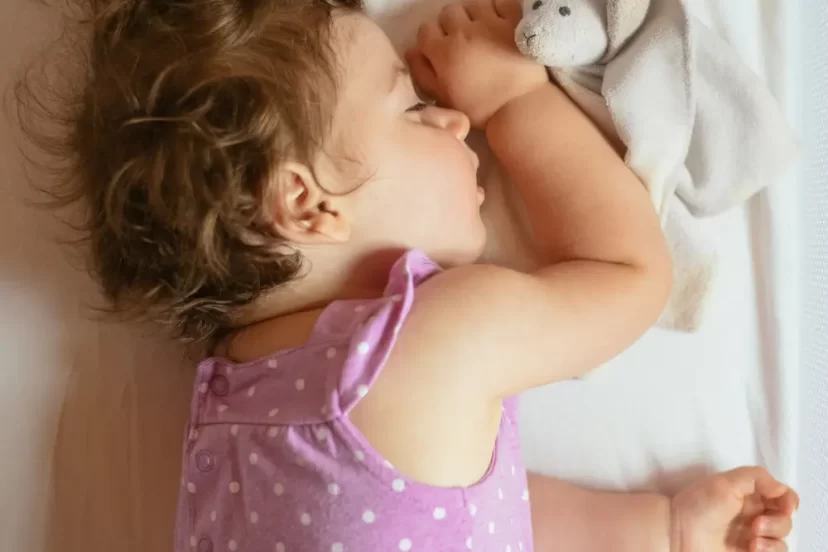Sleep Training for Toddlers: Transitioning to Independent Sleep
We may earn a small commission for purchases made using our links (not affecting your price).
See our disclosure to learn more.
Introducing the concept of “Sleep Training for Toddlers,” this article aims to guide parents through the crucial transition to independent sleep for their little ones. Achieving this milestone not only cultivates healthy sleep habits but also instills a profound sense of security and self-soothing abilities in toddlers. By implementing a carefully designed sleep training method, you can establish a positive sleep routine and encourage your child to sleep independently. This process will reassure you about the positive outcomes of sleep training as your toddler develops a strong sense of security and self-soothing abilities. Within the following sections, you will find practical suggestions along with the underlying reasons to support you in your journey of successfully sleep training your toddler.
Understanding the Importance of Sleep Training for Toddlers
Independent sleep plays a vital role in your toddler’s overall well-being. It allows them to develop self-regulation skills, promotes cognitive development, and enhances their emotional resilience. When toddlers learn to fall asleep on their own and self-soothe during the night, they are more likely to sleep through the night and experience better-quality sleep.
Signs that Your Toddler is Ready for Sleep Training
Before embarking on the sleep training journey, it’s important to identify signs that indicate your toddler is ready. Look for cues such as increased independence, consistent nap schedules, and the ability to self-soothe to determine if your child is prepared for sleep training. It’s crucial to ensure your toddler is in good health and there are no underlying issues affecting their sleep.
Creating a Sleep Routine
Establishing a consistent sleep routine is essential for successful sleep training. Begin by setting a regular bedtime that suits your toddler’s age and sleep needs. Create a calming environment in their bedroom, free from distractions and excessive stimuli. Incorporate bedtime rituals such as reading a story or singing a lullaby to signal that it’s time to wind down.
Gradual Transition to Independent Sleep
Transitioning your toddler to sleep independently should be a gradual process. Start by adjusting the bedtime routine to include moments when your child is awake but drowsy. It allows them to associate falling asleep with their efforts. Introduce a transitional object, such as a stuffed animal or blanket, which provides comfort and familiarity. Another effective method is the Ferber Method, which involves gradually increasing the time you wait before comforting your child during nighttime awakenings.
Dealing with Resistance and Setbacks
During sleep training, you may encounter resistance from your toddler or experience setbacks. It’s essential to stay consistent and patient. Your child may cry or protest initially, but remember that this is part of the adjustment process. Comfort them with soothing words and brief check-ins, reinforcing that you are nearby and they are safe. Stay committed to the sleep training approach you have chosen, as inconsistency can lead to confusion and make the process more challenging.
Maintaining Consistency and Patience
Consistency is key when it comes to sleep pieces of training. Stick to the established sleep routine, even on weekends or during travel. Consistency helps your toddler understand expectations and creates a sense of security. Be patient throughout the process, as it may take time for your child to adapt to the new sleep habits. Remember that each child is different, and progress may vary. Stay positive and supportive, offering reassurance and comfort when needed.
Addressing Common Concerns
During the sleep pieces of the training journey, it’s natural to have concerns and questions. Here are a few common concerns and how to address them:
1. Crying during Sleep Training: It’s common for toddlers to cry when adjusting to independent sleep. However, it’s essential to differentiate between different cries. If your child’s cry is escalating or distressing, it’s appropriate to check in and provide comfort. However, if the cry is more of a protest or whining, it’s best to allow your child to self-soothe and fall asleep independently.
2. Night Wakings and Sleep Regression: Some toddlers may experience night wakings or sleep regressions during the sleep training process. Various factors, such as teething, illness, or developmental milestones, can cause it. Stick to your sleep routine and provide comfort as needed. Avoid introducing new sleep associations or reverting to old habits.
3. Co-sleeping and Bed Sharing: Co-sleeping and bed sharing can affect the success of sleep training. If you’re transitioning your child to independent sleep, it’s advisable to establish a separate sleep space for them. It helps them develop a sense of independence and reduces dependency on parental presence during sleep.
Monitoring and Adjusting Sleep Training Approach
As you progress with sleep pieces of training, regularly monitor your toddler’s sleep patterns and adjust your approach if needed. Please keep track of their sleep duration, nap schedules, and any challenges they face during the night. If you notice persistent difficulties or lack of progress, consult with a pediatrician or sleep specialist for further guidance.
Celebrating Success and Reaping the Benefits
As your toddler becomes more comfortable with independent sleep, celebrate their milestones and successes. Acknowledge their efforts and progress, reinforcing positive sleep habits. Enjoy the benefits of a well-rested toddler, such as improved behavior, increased daytime alertness, and better overall health and well-being.
Conclusion
Transitioning to independent sleep is a significant step in your toddler’s development. By following a thoughtful “sleep training for toddlers” approach, creating a consistent sleep routine, and addressing setbacks with patience and consistency, you can help your child establish healthy sleep habits and promote independent sleep. Remember that each child is unique, and the process may require adjustments along the way. Stay positive, be a supportive parent, and enjoy the rewards of successful sleep training.
FAQs
1. How long does sleep training usually take?
Sleep training duration varies depending on the child and the approach used. It can take anywhere from a few days to a few weeks for your toddler to adjust to the new sleep routine.
2. What if my toddler refuses to sleep alone?
If your toddler resists sleeping alone, continue with the sleep training process while providing comfort and reassurance. Gradually increase the time you spend outside their room until they become more comfortable with independent sleep.
3. Is it normal for my toddler to wake up during the night?
Night wakings can be common, even after sleep pieces of training. However, if your child is consistently having trouble falling back asleep, evaluate their sleep environment and routines for any potential disruptions.
4. Can sleep training negatively impact my toddler’s emotional well-being?
Sleep pieces of training, when done with a gentle and supportive approach, do not negatively impact a toddler’s emotional well-being. It can promote emotional resilience and independence. It’s important to provide comfort and reassurance during the process, ensuring your child feels secure and loved. Remember, sleep training is about teaching your toddler self-soothing skills and helping them develop healthy sleep habits.
5. Are there alternative sleep training methods?
Yes, there are various sleep training methods available, and each family may choose the approach that aligns best with their parenting style and their child’s needs. Some alternative methods include the fading method, the pick-up-put-down method, and the chair method. Research and consult with pediatricians or sleep experts to determine the most suitable approach for your family.
6. What if my toddler has sleep difficulties due to a medical condition?
If your toddler has a medical condition that affects their sleep, it’s important to consult with their healthcare provider. They can provide guidance and support specific to your child’s condition, ensuring that any sleep pieces of training strategies are adapted to their individual needs.
7. Should I expect immediate results from sleep pieces of training?
Sleep training is a gradual process, and results may not be immediate. It requires consistency, patience, and understanding. Some toddlers may respond quickly, while others may require more time to adjust. Remember to focus on progress rather than perfection, celebrating small victories along the way.
8. Can I continue to breastfeed during sleep pieces of training?
Breastfeeding can be incorporated into the sleep pieces of the training routine, but it’s essential to establish boundaries and separate feeding from falling asleep. Gradually shift the feeding time away from bedtime to avoid creating a sleep association solely reliant on nursing.
Remember, every child is unique, and what works for one may not work for another. Trust your instincts as a parent and tailor the sleep pieces of training approach to suit your toddler’s individual needs and temperament. With consistency, patience, and a nurturing approach, you can help your toddler transition to independent sleep and promote healthy sleep habits for years to come.




